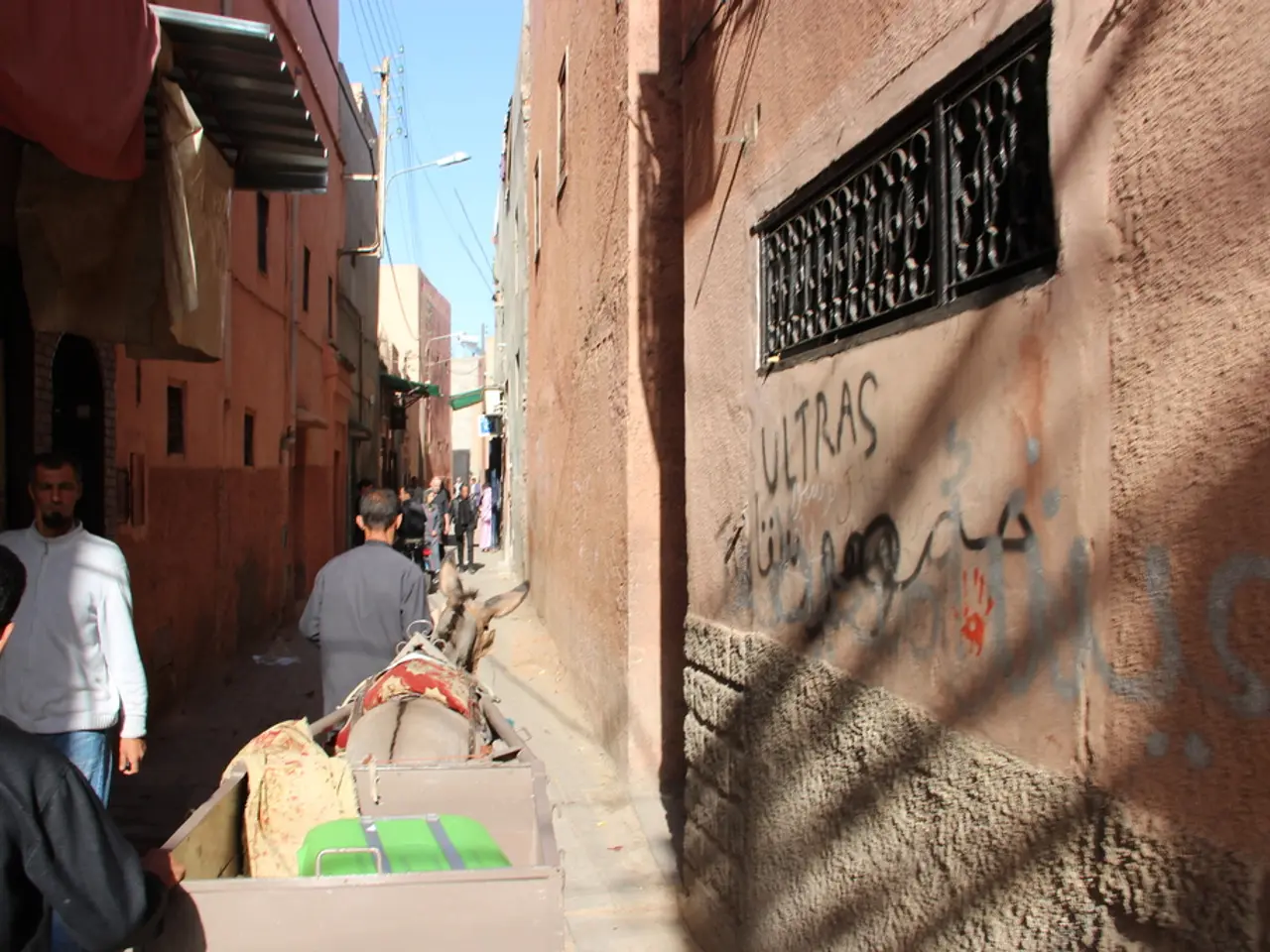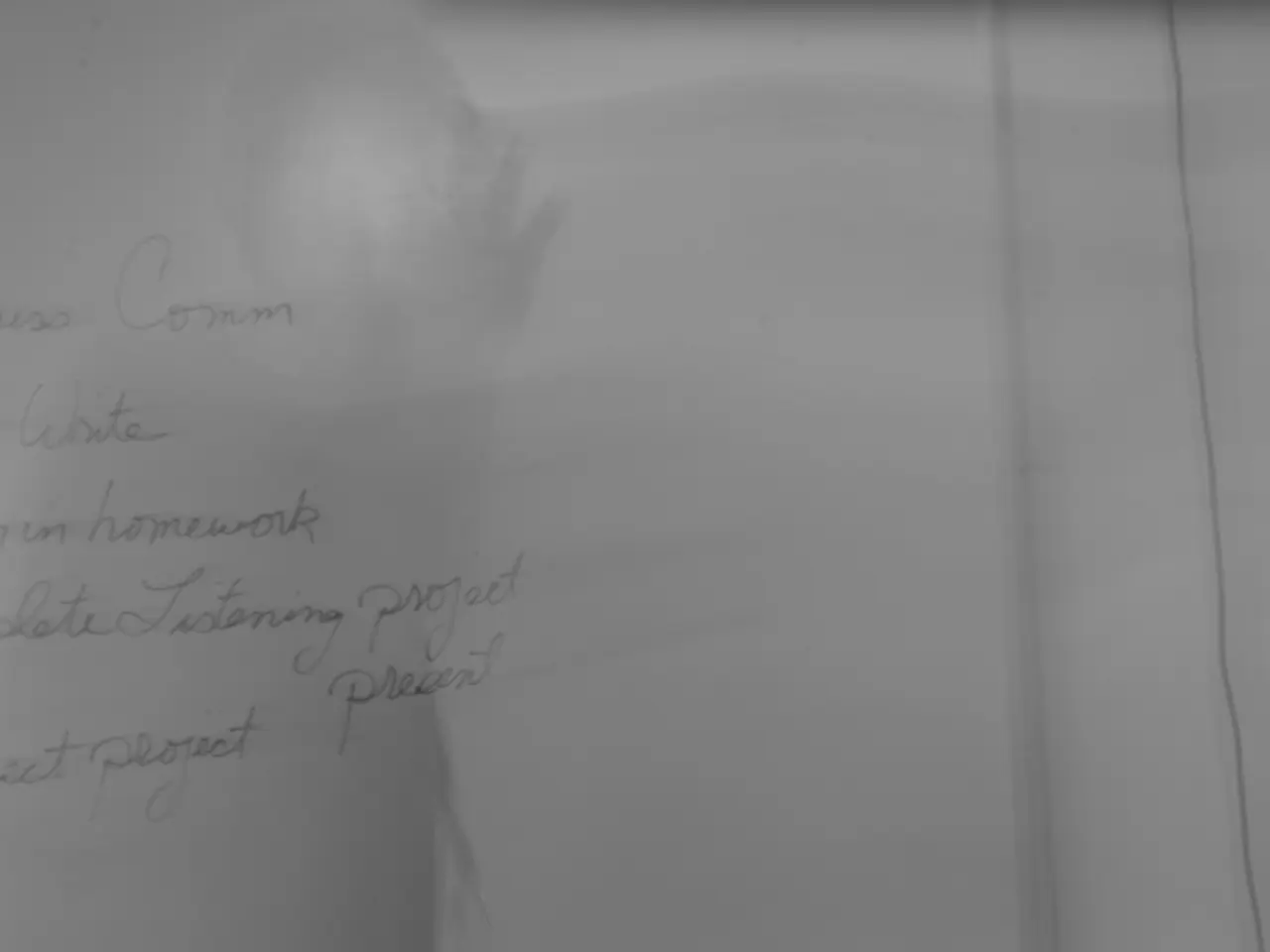Aid supplies increased in Gaza following the removal of restrictions - Post-Embargo Aid Boost: Enhanced Humanitarian Assistance Reaches Gaza Strip
The humanitarian situation in the Gaza Strip continues to deteriorate, marked by mass casualties, critical shortages of essential supplies, and severe restrictions on aid deliveries.
Mass Casualties and Injuries
Since the blockade imposed by Israel in October 2023, over 56,000 Palestinians have been killed and more than 132,000 injured, according to the Gaza Ministry of Health. Recent weekly figures from mid to late July 2025 alone report hundreds of deaths and thousands of injuries in single-week periods due to ongoing strikes and conflict-related violence.
Severe Restrictions and Shortages
The availability of fuel remains critically low, placing vital services such as hospitals, ambulances, water and sanitation systems, bakeries, telecommunications, and humanitarian operations at risk of shutdown or collapse. Food insecurity is severe, with at least 147 deaths attributed to malnutrition in Gaza since the conflict's escalation.
Population Displacement and Overcrowding
Approximately 90% of Gaza’s roughly 2.1 million people have been displaced during the war, many multiple times, compressed into roughly 14% of the territory, exacerbating living conditions and increasing vulnerability to disease and violence.
Challenges for Vulnerable Groups
Children, persons with disabilities, older persons, and humanitarian workers face significant threats and barriers to protection and care, including disrupted civil services like birth registration.
Aid Delivery Difficulties
Humanitarian aid faces persistent operational constraints. Only about a third of aid movement requests are facilitated by Israeli authorities. Aid convoys experience long waits for clearance, and trucks that arrive often encounter desperate crowds at risk of violence or looting. When crowds gather near so-called “red zones,” Israeli Defence Forces (IDF) have fired, causing casualties among civilians hoping for aid.
Partial and Limited Humanitarian Responses
Under international pressure, Israel has intermittently allowed “humanitarian corridors” and airdrops of aid by Israel, Jordan, and the UAE, but these deliveries remain minimal relative to the needs, often amounting to only a few trucks.
Recent Developments
Larger aid shipments have for the first time reached the Gaza Strip since a months-long de facto blockade by Israel. The Israeli military has announced a self-declared humanitarian ceasefire in parts of the Gaza Strip every day from 10:00 to 20:00 local time, unless otherwise stated. The ceasefire would apply in areas where the army is not operating: Al-Mawasi in the southwest, Deir al-Balah in the center, and the city of Gaza in the north. Corridors would be established from 06:00 to 23:00 local time to enable the safe passage of convoys of UN and other aid organizations.
However, despite the ceasefire, Israel continued its attacks there, resulting in at least 53 Palestinians dying since dawn, according to reports from rescue workers. The unconfirmed figure does not distinguish between civilians and fighters. An desalination plant for the treatment of drinking water in the Gaza Strip has been reconnected to the Israeli power grid.
International Efforts
Weapons ceasefire talks have stalled in recent days, but there are now "serious efforts" underway to revive them. The indirect talks on a 60-day ceasefire and the release of hostages from Hamas' custody are mediated by Qatar, Egypt, and the USA. French President Emmanuel Macron announced an international conference on the two-state solution planned for this Monday in New York, aiming to create a new dynamic in favor of a just and lasting solution to the Israeli-Palestinian conflict. German Chancellor Friedrich Merz (CDU) spoke to Israeli Prime Minister Benjamin Netanyahu and urged him to improve the humanitarian situation in the Gaza Strip.
References: [1] UN OCHA, Situation Report No. 10, 26 July 2025. [2] AP News, "Israeli Aid Drops Reach Gaza Strip for First Time," 28 July 2025. [3] Al Jazeera, "Gaza death toll passes 56,000 since 2023 blockade," 27 July 2025. [4] Middle East Monitor, "UN: Gaza's health system on brink of collapse," 24 July 2025.
Health and Wellness
The ongoing conflict in the Gaza Strip has resulted in over 56,000 deaths and more than 132,000 injuries, according to the Gaza Ministry of Health, highlighting a critical need for medical attention and care. The medical-conditions of the survivors are worsened by the lack of supplies, as the availability of fuel for hospitals remains critically low.
Science and Politics
Diplomatic efforts are being made to find a resolution to the conflict, with international conferences focusing on the Israeli-Palestinian conflict, such as the one planned by French President Emmanuel Macron this Monday in New York. These discussions aim to create a progression towards a sustainable, just, and lasting solution.
General News and War and Conflicts
While a recent announcement of a self-declared humanitarian ceasefire in parts of the Gaza Strip has been made by the Israeli military, violence continues, causing at least 53 Palestinians to die since dawn, according to rescue workers. The ceasefire, if maintained, could potentially improve aid delivery and contribute to a peaceful solution to the volatile situation in the region.




